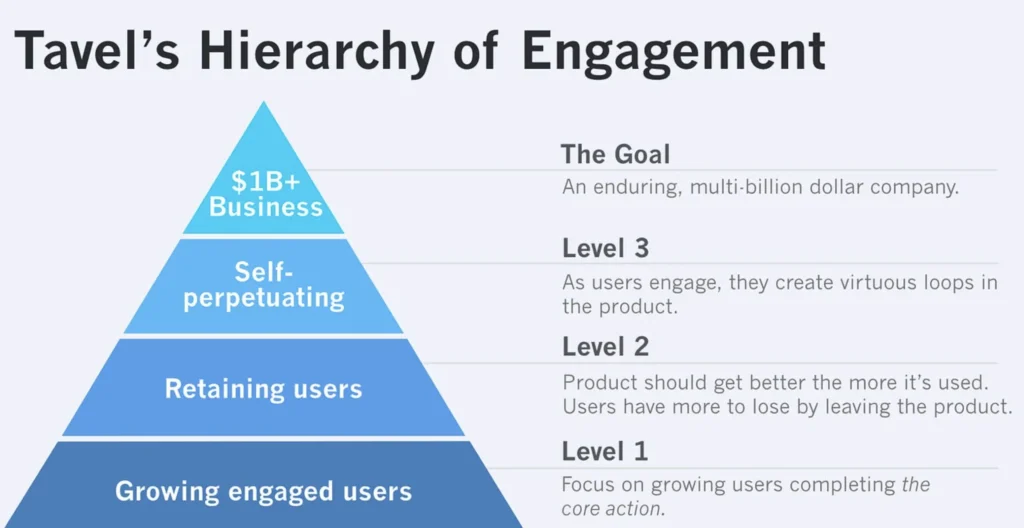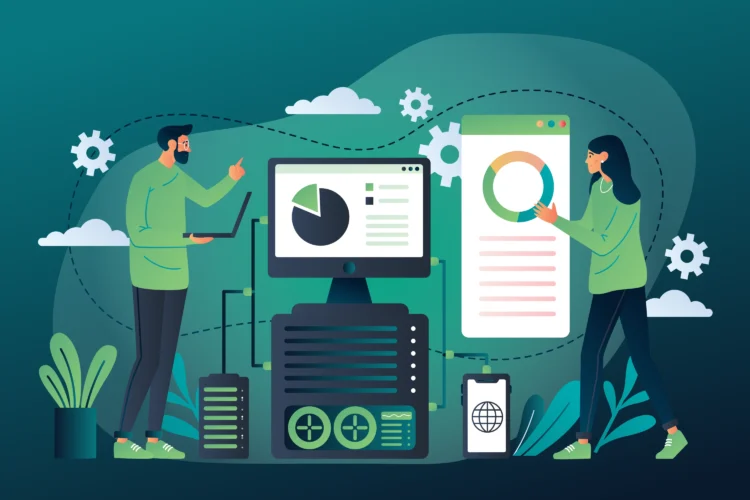
Taking time to think through and plan your moves is the only right way to ensure steady SaaS revenue growth – everything else is relying on pure luck. SaaS businesses rely on sound strategies heavily as your entire business model revolves around subscriptions and retention, instead of one-time big purchases.
Therefore, if you plan to scale steadily as time goes by, you will need to implement a sound SaaS growth strategy framework.
To help, we have created this post that will explain to you the fundamentals of a good SaaS growth strategy framework, give you tips and examples on how to implement one, and the reasons why you should immediately do it if you haven’t done so already.
By the time you finish reading this piece, you will have a much better understanding of this crucial piece that can be the foundation stone for the future success of your SaaS company. 🎯
What is a SaaS growth strategy framework and why do you need one?
Developing a growth strategy tailored specifically for your SaaS is one of the most important things you can do for your business as a whole. With a good plan, you will have a sound idea of the entire customer lifecycle, from identifying the right customers and building awareness, to conversions, retention, and referrals.
We will give you a 3-step plan with concrete examples, and help you create a SaaS growth strategy for your own business by building on top of the phenomenal Sarah Travel’s Hierarchy of Engagement.

SaaS growth strategy Step #1: Growing engaged users
While customer acquisition for SaaS is a vital concept in general, as Sarah explains, while acquiring customers you should focus on them performing one core action.
While nowadays most apps have various features, the core action is the reason why target users look for products just like yours. This will heavily depend on your niche/industry, but here are some examples:
- Project management apps: time tracking and team collaboration
- Fitness apps: calorie and workout tracking
- Dating apps: matching
What’s important is to pay attention to the core action only. For example, if the core action of your project management app is team collaboration, users who only use it solely for tracking time on their solo projects aren’t completing the core action. While this doesn’t sound bad at first, long term, it is not good either: the core action is closely related to customer retention in SaaS.
In our example, if a customer uses your project management app for collaboration and delegating tasks within their team, that makes it much more likely for them to stick with it, long term. If the app has all that their team needs, they will get used to it, and stop looking for alternatives.
What’s more, if they are satisfied, they are likely to continue using it even as their team grows, as the app will become an integral part of their toolbox. That will make it more likely for them to invest in more expensive packages too.
On the other hand, if a freelancer uses the app to track their own time, even if they continue to do so in the future, they will hardly ever need to upgrade their plan if they are only using the app for themselves, making them a much “worse” customer in the long run.
SaaS growth strategy Step #2: Retaining users
While it’s important to try to retain all users, the engaged users described in Step #1 are the ones that fit your ideal buyer persona the best. Therefore, if you manage to attract and retain them in the long run, your business will scale in the right direction.
To retain engaged users, Sarah tells us to “Create accruing benefits and mounting losses as a user engages”, and to make the product better and better as the users engage with it.
The “accruing benefits” part means not only working on SaaS product development and updating it by listening to feedback from engaged users, which is a goldmine of quality information. However, accruing benefits are also a result of the user directly interacting with it – the more they use the tool, the better the experience will become.
On the other hand, the “mounting losses” part comes as a result of long-term use – it describes how hard it is for the engaged user to ditch the app, and look for competitors.
In our project management app example, imagine a content manager who runs a team of both in-house and freelance writers using your project management tool – switching to a competitor will mean that the entire team needs to learn how to use a new tool, and the job still needs to be done in the meanwhile.
SaaS growth strategy Step #3: Self-perpetuating
Sarah describes self-perpetuating growth like this: “As users engage, they create virtuous loops in the product”.
Our productivity app example will also show how this works:
- Attracting engaged users: a content manager decides to try your SaaS productivity app for delegating tasks in their small content team.
- Accruing benefit: as their team grows, they add more users to the app, which becomes even more integral for their workflow (this will also make them upgrade their plan as time goes by).
- Mounting loss: as the team gets bigger, it becomes harder to switch productivity apps, as it can disrupt the entire workflow.
- Self-perpetuating growth: if the content manager is satisfied with the productivity app, they are likely to recommend it to the entire organisation, if they ever become the CMO. The same will happen if they change firms – if they liked the workflow, there’s no reason to adjust to other apps. But, also, any of the writers and editors who were a part of the team are likely to use the app if they switch teams or firms, especially if they become content managers themselves.
Bottom line
Through self-perpetuating growth, your product doesn’t have to rely solely on SaaS sales tactics to grow – it will do marketing and sales by itself, just by being a great product. However, to achieve that, you need to position yourself among the right customer base, and within your niche, which is where good marketing tactics come into play.
While that is something you can do on your own, the sheer importance of setting up the right growth strategy for your SaaS product’s positioning makes partnering with experts a wise move.
Bounty Hunter specializes in helping B2B SaaS companies scale by implementing both new and time-tested digital marketing strategies. Book a strategy call with our experts today and let’s start working together on unlocking the next chapter of your SaaS product’s growth. 🚀








